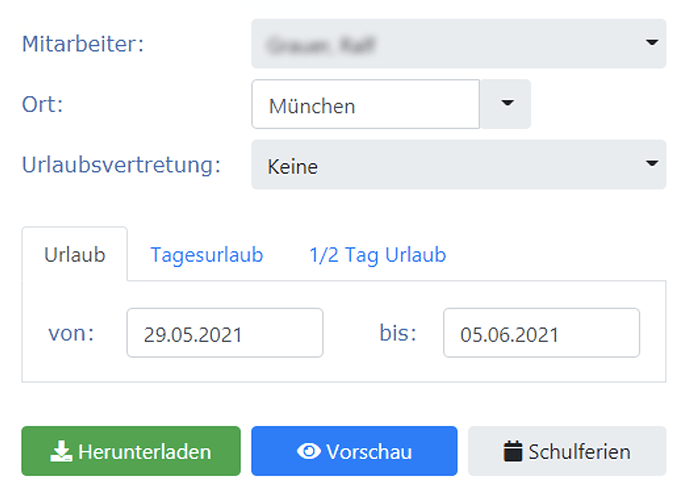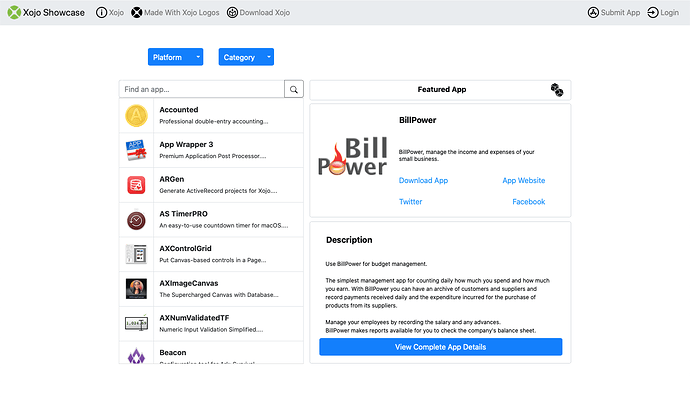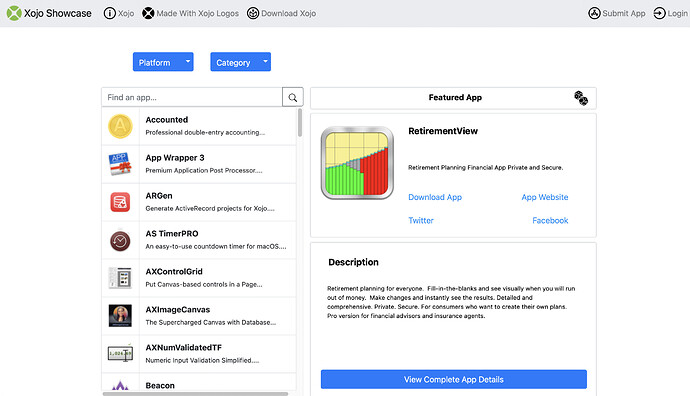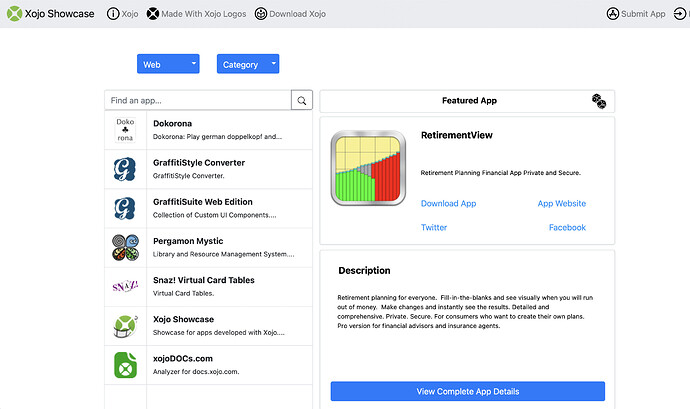Interested In what people have been able to build so far, any examples or screenshots?
I’m always curious about how Web 2.0 is being used too
Other than xojodocs.com there is nothing I can really show, unfortunately. Everything under NDA, but I can share this anonymized web app from a customer, at least partially. Though the data are dummy data, I had to blur the pictures a bit. Thanks for your understanding.
Dashboard
This is showing the “dashboard” for a financial service customer. All those stock values are constantly updated. It is showing the status on their C and home drive, only for the reason that they are quite good in filling the system to the extent that the server is close to crash 
On other screens, under stricter NDA (can’t show), they have all the logins to their different banks, they can see their VIP contacts at every bank, the conditions they have with partners, manage their private contact data, and a lot more, including all the handbooks for their internal processes.
Whenever they buy/sell stocks, ETFs, fonds, etc. they have to keep a log (regulated market). In the old days, this was done via excel sheets per employee, and an assistant was consolidating everything once a month. Now everything is database-driven, they only need to maintain the data, and the system will generate all the Excel sheets / Pdfs needed.
Detail view Logbook:
Overview Logbook:
Vacation planner:
Something simple for the employees, they fill in whenever they need a day off, and can download a pdf, done:
Overall I could have done all of these in many different languages/frameworks. But I would never ever been as fast as with Xojo Web 2. A few things might look better if done with other solutions, a few things might work smoother in other tools, but overall the customer is VERY happy, the auditors are happy, and consequently, I’m happy as well  .
.
All our Web2 solutions are more or less working the same way. Collecting data from databases, interacting with the user, updating data, exporting data into Excel sheets and pdfs. And that’s easy and fun to do with Xojo Web 2.
What is missing is responsive design. Not that this customer is (yet) asking for it, and it does work on iPad in landscape mode (which they do use), but at the dashboard for instance would be nice to show up nicely on a phone. That’s not yet the case, and would anyways be a lot of work in the current version. The best would probably be to make an own screen for smaller devices.
What I can’t show either: 10 to 15 webpages for their “administrator”, where they can maintain many meta data, appearing on the generated excels and pdfs, which they can now customize themselves.
@Xojo It is fine to have these screenshots here on this forum, but please don’t propagate/push it further through any official communication. The same applies to every other user reading this. We are all professional(s), and should behave accordingly  - Thank you!
- Thank you!
Technical specs: running in an intranet in an “old” Windows Terminal Server (2012R2) environment. The exe runs as a Windows Service. Data maintained in a postgres12 database on their SQL Server. Done. No memory leak, running now for over 5 weeks with no memory leak nor any negative performance impact on the server performance.
You can find some apps submitted by developers at https://showcase.xojo.com (select Web under the Category menu). Showcase itself is made with Xojo Web 2.0.
Why doesn’t anyone at Xojo do at least minimal testing? This is supposed to be a “showcase”.
- Back button doesn’t work.
- Slow.
- Why does the link to the app say “download app”?
- Super odd selection.
I open the showcase. On the right side some app is shown. But I haven’t selected anything in the left listbox. At least I can’t see anything.
I select web as category. I still see the same app on the right side.
???
Oh, the last issue sort of is on purpose and is called “featured app”. The featured app should be gone when I do a selection. Really strange interface.
Plus, I think @Daniel_Wilson is quite aware of that App. The issue in general is, that there are probably many cools apps out there, but they are not commercial apps by the means that they are publicly available, but they were developed for specific customers. I bet that is very often the case for Web1 or Web2 apps.
Thanks for sharing everyone 
@Jeannot_Muller yes, example apps are nice and all but good to see what people have created in the wild.
Is compute costs a limiting factor with publicly available web apps?
Edit: I can see actually there are a few commercial apps in the showcase page.
I can only speculate. But it is also not the case that other tools can scale infinitely without generating additional costs. Different solutions can handle more simultaneous users, but everywhere you need “load balancing” at some point, the costs grow (especially the costs for maintenance, downtime avoidance, backup, paid services, etc.)
I assume that it is simply due to the not necessarily pronounced popularity of Xojo and certainly also that it costs money to work with Xojo for a productive solution. Many well-known solutions started as a small project, and if it was successful, it was professionalized. And many of these solutions are “web only,” i.e., advantages that many of us see with Xojo do not exist for these developers (that’s why most of them don’t use Java either, “code sharing” is initially uninteresting. Many tell them that python and a framework are the way to go, and they start with that.
For many, however, it is vital that their web solution works and looks good on all devices right from the start. And there are simple tools on the market that are currently better implementing precisely this aspect. However, these tools often have other “challenges”: e.g. REST APIs between the front and back end, mostly more complex to set up a development environment and (!) To maintain it.
Plus, there are just different markets. I think Xojo Web is used by many who want to offer their existing customers additional web solutions or developers who slowly but surely want to provide more and more web solutions because the web is the future for them (as for me). Last but not least, there is the cost factor for many “young” indie developers. Xojo has many plugins, which are easy to use, fast, and well maintained, but they also come with a price ticket. As with other tools, you are just downloading another library, and you are good to go. However, those libraries might stop being developed suddenly, so comparing those with Xojo isn’t probably always fair.
The cost aspect is double-edged. Nothing is free. Either you pay with your money or with your time. But nowadays, you start with what others recommend on the common platforms, which is free to get, and unfortunately, that is often not Xojo. Let’s hope that will change ;-). More customers for Xojo, more development, more plugins, more support, with increasing popularity, all parties can only win. In this respect, it is undoubtedly counterproductive if we hang on to little things in negative posts, which would unfortunately also put me off as a first-time customer.
That scared me off back in 2005 when I started using the tool. It takes a bit of time to recognize its strengths and benefits, and then it is much easier to deal with the minor weaknesses (which every solution has).
I believe @Jeannot_Muller is correct in the sense that the great majority of Xojo Web Apps are not publicly facing.
If I were to sum it up in a single phrase: Web Apps are not Web Sites (like cars and trucks sharing the same highway, they both drive, but one carries passengers the other freight).
I use Xojo Web Apps internally for a range of company workflows.
I use Xojo Web Apps to code complex models and simulations. Some of them short lived, some live for many years.
I use Xojo Web Apps to conceptualise and communicate ideas particularly when raising venture capital.
(Issues, bugs / build quality / missing features put aside for a moment) You might not build the next Facebook in Xojo, but given Xojo Web Apps can be containerised (docker etc) you can at least scale. Having managed a platform build (the scarcity of available / skilled Xojo developers I imagine would be more of an impediment to building the next Facebook on Xojo than the platform itself).
But for that great middle ground in between use case extremes and as a toolbox inside a corporate environment it is a capable tool.
Further, I really believe @Tim_Parnell has produced something special in Lifeboat that greatly simplifies deployment of Xojo Web Apps to low-cost or scalable infrastructures. I would hope you might see a few more public examples as a result of the ease-of-use of Tim’s solution.
Kind regards, Andrew
Exactly, especially as those people (called admins) in corporation usually don’t want to build up anything “new” only for “some crazy external developers”. This is another area where the new web2 shines, as it very easy (even on a Windows Server) to make it up and running very quickly and in a secure way to make the admins happy.
I have spent a fair bit of money over the last 10 months developing my web app. The cost of Lifeboat is definitely one of the best value purchases I made during this time. Personally I think he should double it’s Pro cost but that’s just me.






